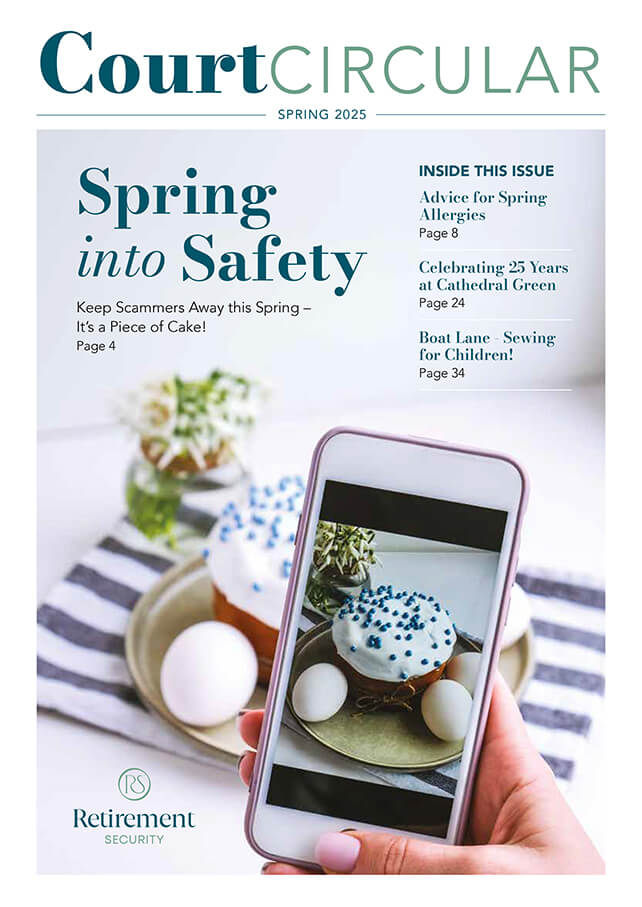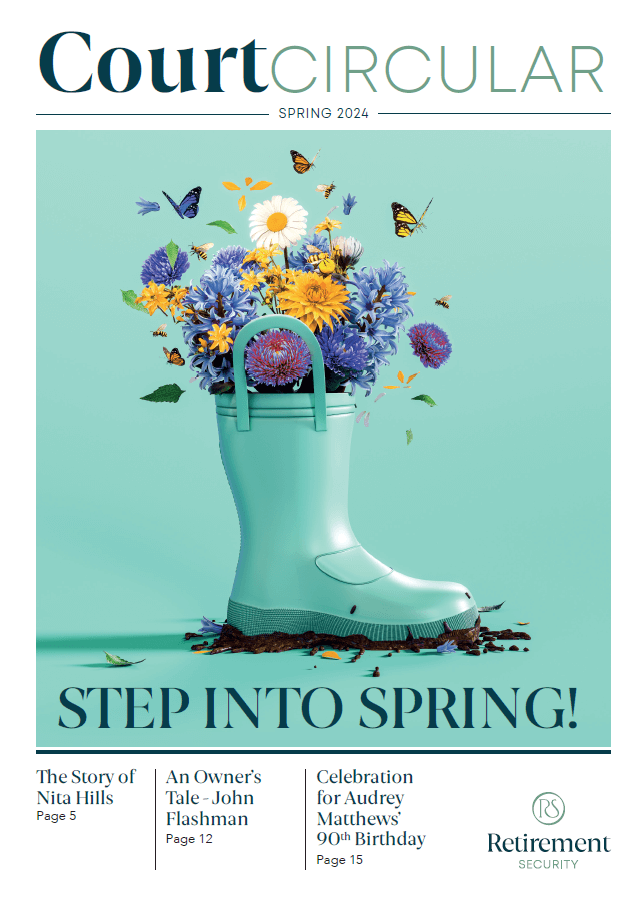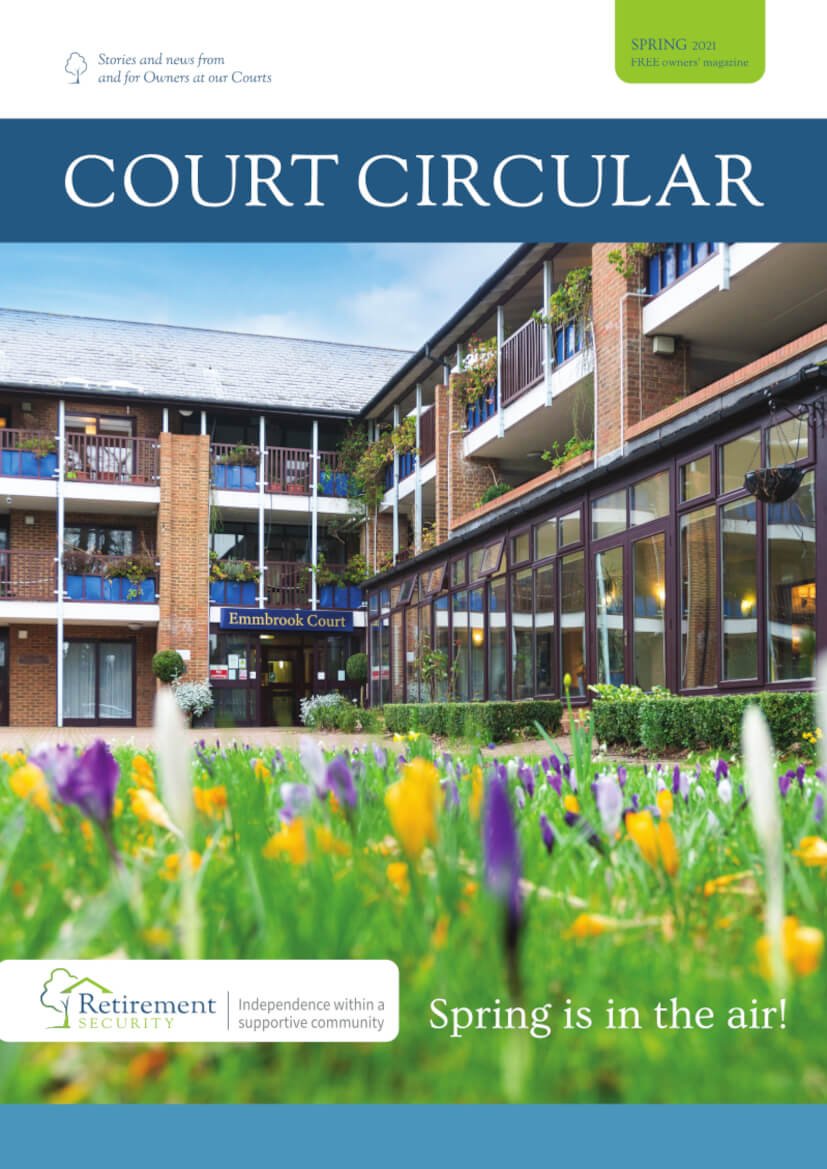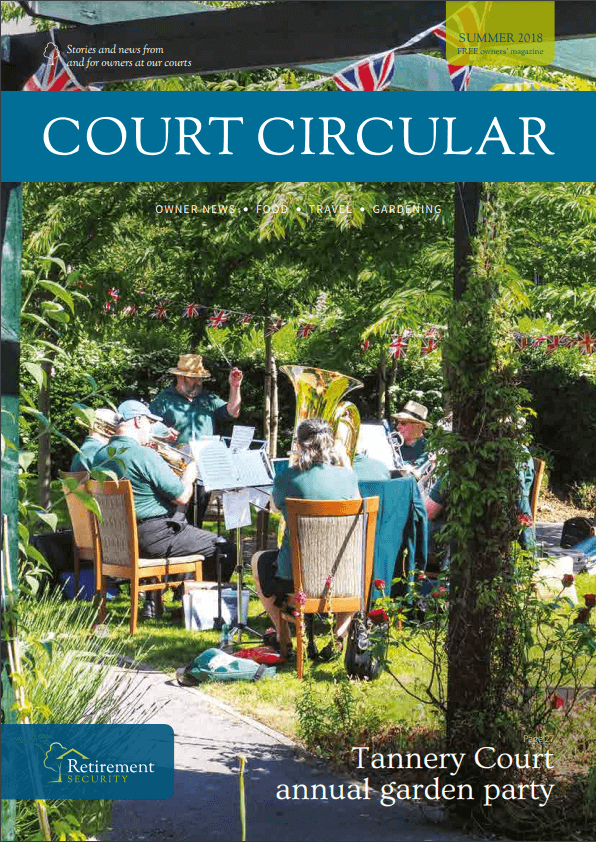A pioneer in a man’s world
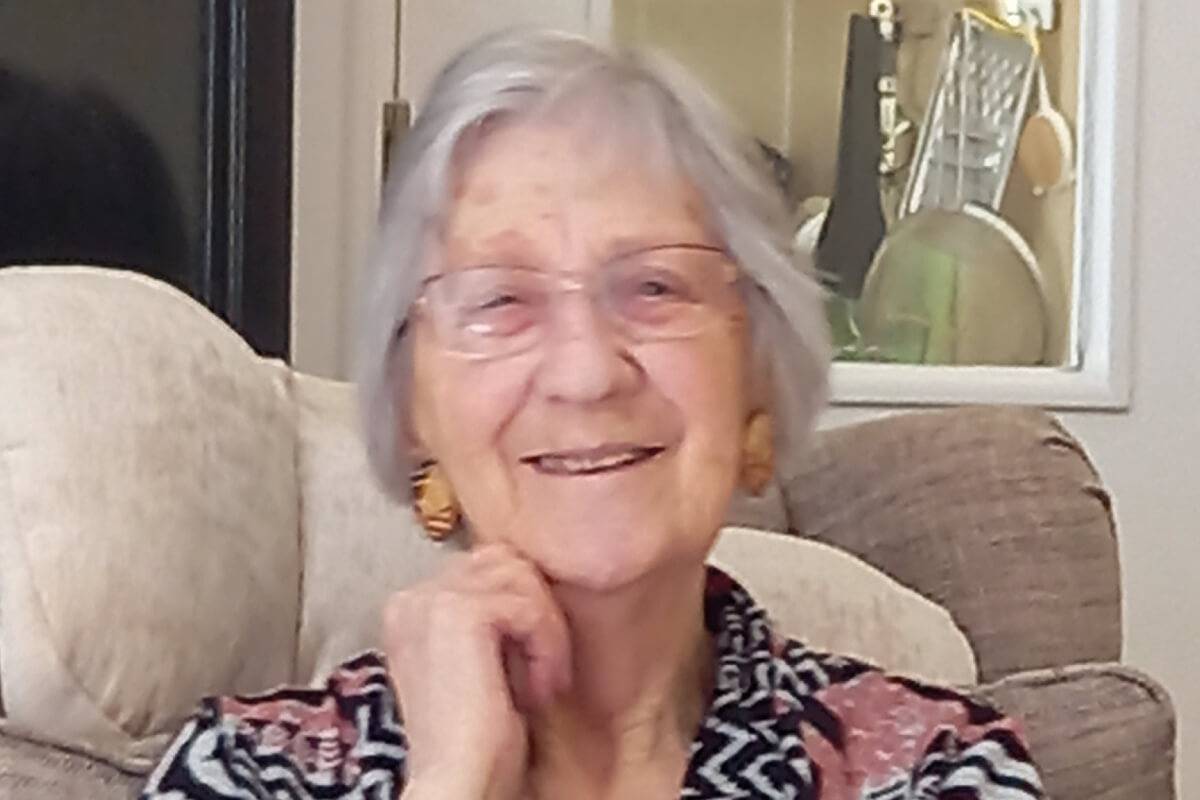
Cissie Goldberg (who turned 97 in April) has been recognised as an outstanding woman in the world of statistics and statisticians.
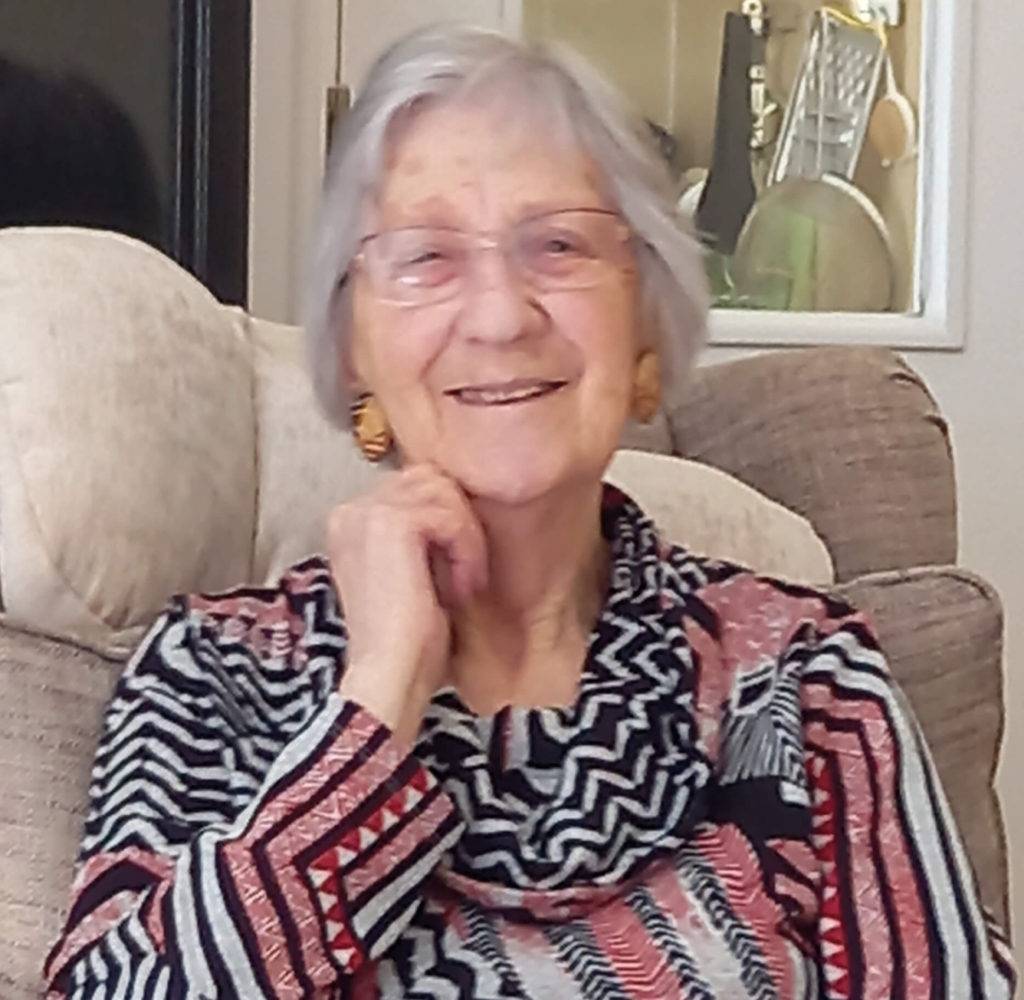
As a child Cissie loved ‘sums’ and has always had a natural flair for looking at data and recognising its validity.
She was very surprised when, out of the blue, she was invited to be one of this year’s ‘The Twenty Women in Data and Tech’, an annual presentation at the O2 Centre in London. As she did not want to go to London, the production team, complete with internationally acclaimed photographers, came to Melton Court. They moved furniture and set up a studio in her living room; they rummaged in her wardrobe to find appropriate clothes to suit their theme and spent several hours filming. The event took place in front of an audience of some 3,000 people at the O2 Centre on March 7th 2024. Nineteen women were present on stage at the event, with Cissie making an appearance and a statement on a giant screen.
Cissie gained her B.Sc. at Leeds University in 1949 and got her first job in research and development at British Nylon Spinners in Wales. She was looking into how the nylon, previously used for parachutes during the war, could be refined and used for making stockings and other fashion garments. She found that the thickness of the nylon threads produced by the traditional method was uneven; she discovered why and this was remedied, and so started her career in quality control, and the publication of her first paper. She was allocated a male assistant, who earned more than her, as she was a mere female!
When Cissie’s mother became ill she returned to Leeds to help to look after her, and also got a job in the Department of Physical Chemistry at the University, learning how to design a punch-card method for determining the structure of crystals. This involved 6-weeks training in Holerith card-sorting machines, the very first forerunners of modern computers. This proved to be very useful, leading to the next stage of her career.
Once her mother was better, because of her experience with punch-cards, Cissie was offered a job in the Shefield University Department of Social and Preventive Medicine analysing the results of a very important survey on the ‘Health and Welfare of the Elderly Living at Home’, the data for which was on punch-cards. This research project was also published, including graphs and tables, showing the full analysis of the data collected.
Whilst she was there she also ran a course on statistics for fourth year medical students, who were several years older than herself, as they had served in the army. Some years later Cissie was invited to run a similar course for the Faculty of Social Services – David Blunkett was one of her students – sitting in the front row, along with his guide-dog. She also co-authored more than a dozen papers for medical journals, and the reputation she had earned as an expert on statistics led to many doctors seeking her guidance in their research over the years.
Cissie married Basil in 1953, Jill was born in 1955, and once she was in nursery school Cissie was free to resume her career. Via a friend she was contacted by Bassetts to set up quality control programming for the production and automatic weighing of jelly babies – previously it was done by hand, the girls putting an extra couple of jellies into each box to make sure that they didn’t contravene Weights & Measures regulations, as they lost moisture over time. Cissie’s system saved the company many thousands of pounds a year. She was also responsible for making sure that sweet cigarettes did not fall out of their liquorice holders! As for the famous Basset’s Liquorice Allsorts, she had to select how many of each variety to include in a box, balancing the cost of each type against customers’ preferences, to keep the cost down.
Kate, Cissie’s younger daughter, had problems with her immune system; her consultant paediatrician, Professor Victor Dubowitz and his wife Lil (also a paediatrician) became firm friends of Cissie, so when they invited her to assist with their research in the neo-natal department at the Hammersmith Hospital Cissie jumped at the chance. This was ground-breaking research and the Dubowitz/Goldberg paper ‘The Assessment of the Gestational Age of the New-born’ achieved international acclaim. Premature babies need special treatment and this was a scoring system to determine whether a baby was premature, as weight alone is not accurate. This system was used for many years until it was superseded by the use of ultra-sound and the same team published another paper. Many years later, when Cissie & Basil were living on their boat in Spain, they met a retired midwife; they chatted about their former lives and their new friend asked “are you that Goldberg?” – fame indeed.
Over the years Cissie has been approached by people from all walks of life for her help in data analysis – a job she tackled with relish, enjoying the challenges presented, until she took early retirement in 1981. Quite an achievement for a girl who just loved sums!
Helena Greene
Recent Posts
Archives
Categories

Cissie Goldberg (who turned 97 in April) has been recognised as an outstanding woman in the world of statistics and statisticians.

As a child Cissie loved ‘sums’ and has always had a natural flair for looking at data and recognising its validity.
She was very surprised when, out of the blue, she was invited to be one of this year’s ‘The Twenty Women in Data and Tech’, an annual presentation at the O2 Centre in London. As she did not want to go to London, the production team, complete with internationally acclaimed photographers, came to Melton Court. They moved furniture and set up a studio in her living room; they rummaged in her wardrobe to find appropriate clothes to suit their theme and spent several hours filming. The event took place in front of an audience of some 3,000 people at the O2 Centre on March 7th 2024. Nineteen women were present on stage at the event, with Cissie making an appearance and a statement on a giant screen.
Cissie gained her B.Sc. at Leeds University in 1949 and got her first job in research and development at British Nylon Spinners in Wales. She was looking into how the nylon, previously used for parachutes during the war, could be refined and used for making stockings and other fashion garments. She found that the thickness of the nylon threads produced by the traditional method was uneven; she discovered why and this was remedied, and so started her career in quality control, and the publication of her first paper. She was allocated a male assistant, who earned more than her, as she was a mere female!
When Cissie’s mother became ill she returned to Leeds to help to look after her, and also got a job in the Department of Physical Chemistry at the University, learning how to design a punch-card method for determining the structure of crystals. This involved 6-weeks training in Holerith card-sorting machines, the very first forerunners of modern computers. This proved to be very useful, leading to the next stage of her career.
Once her mother was better, because of her experience with punch-cards, Cissie was offered a job in the Shefield University Department of Social and Preventive Medicine analysing the results of a very important survey on the ‘Health and Welfare of the Elderly Living at Home’, the data for which was on punch-cards. This research project was also published, including graphs and tables, showing the full analysis of the data collected.
Whilst she was there she also ran a course on statistics for fourth year medical students, who were several years older than herself, as they had served in the army. Some years later Cissie was invited to run a similar course for the Faculty of Social Services – David Blunkett was one of her students – sitting in the front row, along with his guide-dog. She also co-authored more than a dozen papers for medical journals, and the reputation she had earned as an expert on statistics led to many doctors seeking her guidance in their research over the years.
Cissie married Basil in 1953, Jill was born in 1955, and once she was in nursery school Cissie was free to resume her career. Via a friend she was contacted by Bassetts to set up quality control programming for the production and automatic weighing of jelly babies – previously it was done by hand, the girls putting an extra couple of jellies into each box to make sure that they didn’t contravene Weights & Measures regulations, as they lost moisture over time. Cissie’s system saved the company many thousands of pounds a year. She was also responsible for making sure that sweet cigarettes did not fall out of their liquorice holders! As for the famous Basset’s Liquorice Allsorts, she had to select how many of each variety to include in a box, balancing the cost of each type against customers’ preferences, to keep the cost down.
Kate, Cissie’s younger daughter, had problems with her immune system; her consultant paediatrician, Professor Victor Dubowitz and his wife Lil (also a paediatrician) became firm friends of Cissie, so when they invited her to assist with their research in the neo-natal department at the Hammersmith Hospital Cissie jumped at the chance. This was ground-breaking research and the Dubowitz/Goldberg paper ‘The Assessment of the Gestational Age of the New-born’ achieved international acclaim. Premature babies need special treatment and this was a scoring system to determine whether a baby was premature, as weight alone is not accurate. This system was used for many years until it was superseded by the use of ultra-sound and the same team published another paper. Many years later, when Cissie & Basil were living on their boat in Spain, they met a retired midwife; they chatted about their former lives and their new friend asked “are you that Goldberg?” – fame indeed.
Over the years Cissie has been approached by people from all walks of life for her help in data analysis – a job she tackled with relish, enjoying the challenges presented, until she took early retirement in 1981. Quite an achievement for a girl who just loved sums!
Helena Greene


